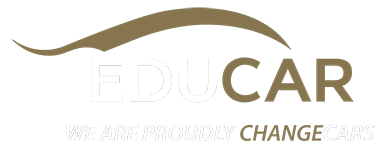The Hyundai i20 has a completely refreshed look for Model Year 2024 that involves repositioning the range and replacing the Fluid and Motion monnikers with Premium and Executive while keeping the improved specification models competitively priced in their respective brackets.
Engine and drivetrains remain the same with the 1,2-litre and 1,4-litre power units doing duty in both manual and automatic formats, with the latter now six-speed transmission. Slightly left of field is the 1,0-litre turbo N-Line variant that sits in its own niche in the spectrum.
The range starts with the fleet-friendly 1,2-litre Premium manual at R309 900 and moves upward to the fully-specced 1,4-litre Executive automatic at R349 900.

Sculpture: Anton Smit
Check out our great selection of pre-owned i20 models
Starting off the pack is the i20 1.2 Premium 5MT, and this entry-level choice priced at R309 900 comes in at t R23 600 less than its predecessor, the i20 1.2 Motion 5MT. The 1,2-litre engine deliverers 61 kW and 115 Nm through a 5-speed manual gearbox.
Moving up, is the i20 1.2 Executive 5MT at R329 900, priced identically to the larger-engined i20 1.4 Premium 6AT, though the latter gets an automatic gearbox. The 1,4-litre engine churns out 74 kW and 133 Nm, now R37 000 cheaper than its predecessor.
The i20 1.4 Executive 6AT at R349 900 provides additional power and luxury, while the flagship i20 1.0T N Line 7DCT holds steady at R467 500. This hotshot retains its turbo-charged 1,0-litre engine, producing 90 kW and 172 Nm, paired now with a slick 7-speed dual-clutch transmission and gaining paddle-shifters behind the steering wheel.

Finance? Not a problem. Just click here
The Premium trim level equips models with 15-inch steel wheels under dark covers, anti-lock braking with EBD, and two crash bags. Inside, there is a mix of black cloth and leatherette, an 8-inch touchscreen and a handy reverse-view camera, amongst other goodies.
Opting for the Executive grade adds 16-inch alloy wheels, leatherette on the steering wheel, cooling in the glove box, wireless smartphone charging and more stylish touches such as a black roof finish.
Related Content: Hyundai Grand i10 Sedan on test
Meanwhile, the N Line amps things up with sporty styling cues, LED headlights, and extras including a Bose sound system and electronic stability control. It’s got all the bells and whistles for those who crave a bit of flair on the road. And, as always, there is not a long list of costly options - what you see is what you get.

I got to drive the N Line on the launch – which comes only in white or blue with a black roof – and despite some spirited motoring to see just what the 1,0-litre engine could do, finished the 80 km stint with a fuel consumption of 6,0 l/100 km.
Visually, the N Line differs from the rest of the range with its own grille design and a slightly revised front bumper – at the rear keeping the signature twin-pipe exhaust that helps give the engine its nice little rorty note as it climbs up through the revs.
This is not a true ‘N’ variant ut, nevertheless, provides more than enough perky fun to make Mr Plod very angry indeed. The DCT transmission smooths out the transition up and down the gears and responds quickly to throttle instructions.
On the road it feels solid and planted and whips through corners like a slot car, allowing for plenty of fun motoring. In manual mode, the steering also responds by tightening up and becoming more direct as opposed to the softer feel of the traffic and parking lot setup in normal mode.
Colin Windell
Proudly CHANGECARS












